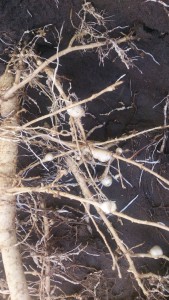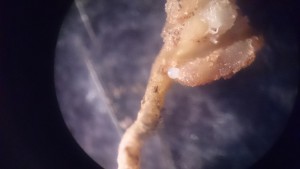Nematodes
Nematodes in the cultivation of Papayas.
In the cultivation of papaya (Carica papaya L.) , diseases caused by native soil pathogens are reported.
Phytoparasitic nematodes are considered of utmost importance due to the increase in damage that has been observed in recent years, especially in sandy soil. They colonize and feed on the soil, causing damage to the radical system, favoring the penetration of other native pathogens.
Symptom.
The symptoms that can commonly be observed are:
- Plantations that manifest squatting.
- Chlorosis in the aerial part.
- Rickety growth of the plant.
- Plants tilted or even knocked down by the damage of nematodes.
Although many species have been reported affecting Papaya, without a doubt 2 of the most common in most of the plantations where they occur. These are Meloidogyne sp and Rotylenchus sp .
These two species of Nematodes cause galling or root nodules and necrosis in them.
In the gills / nodules found in the root it is common to find the females of Meloidogyne sp which have a globose shape.
Control.
Some factors that favor the presence of nematodes should be considered:
- Soils between 60 to 70% sand, 10 to 12% clay and 18 to 20% silt, that is, the presence of sandy soils will always favor nematodes, especially Meloidogyne.
- PH level between 5 and 7.
- Electrical conductivity between 0.5 to 1.5 dS m-1 which is considered as a low conductivity especially when it is in harvest.
- Low organic matter less than 1.5.
Therefore, the application of organic matter is important, since it allows the development of antagonistic or suppressor microbiota.
The application of biological products such as Pasteuria sp (Clariva) and different brands of Paecelomyces lilacinus have shown a promising effect in the control of nematodes.
Note: Chemical nematicides can be used considering the regulation regarding their application and recommended doses.
Copyright © All Rights Reserved.
Semillas del Caribe / One Step Ahead








